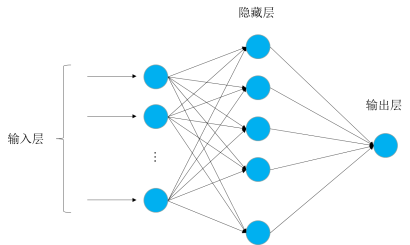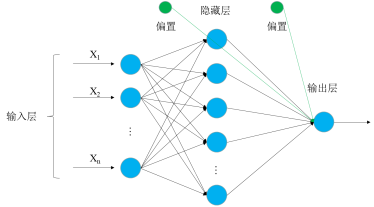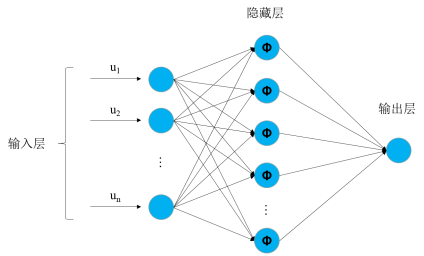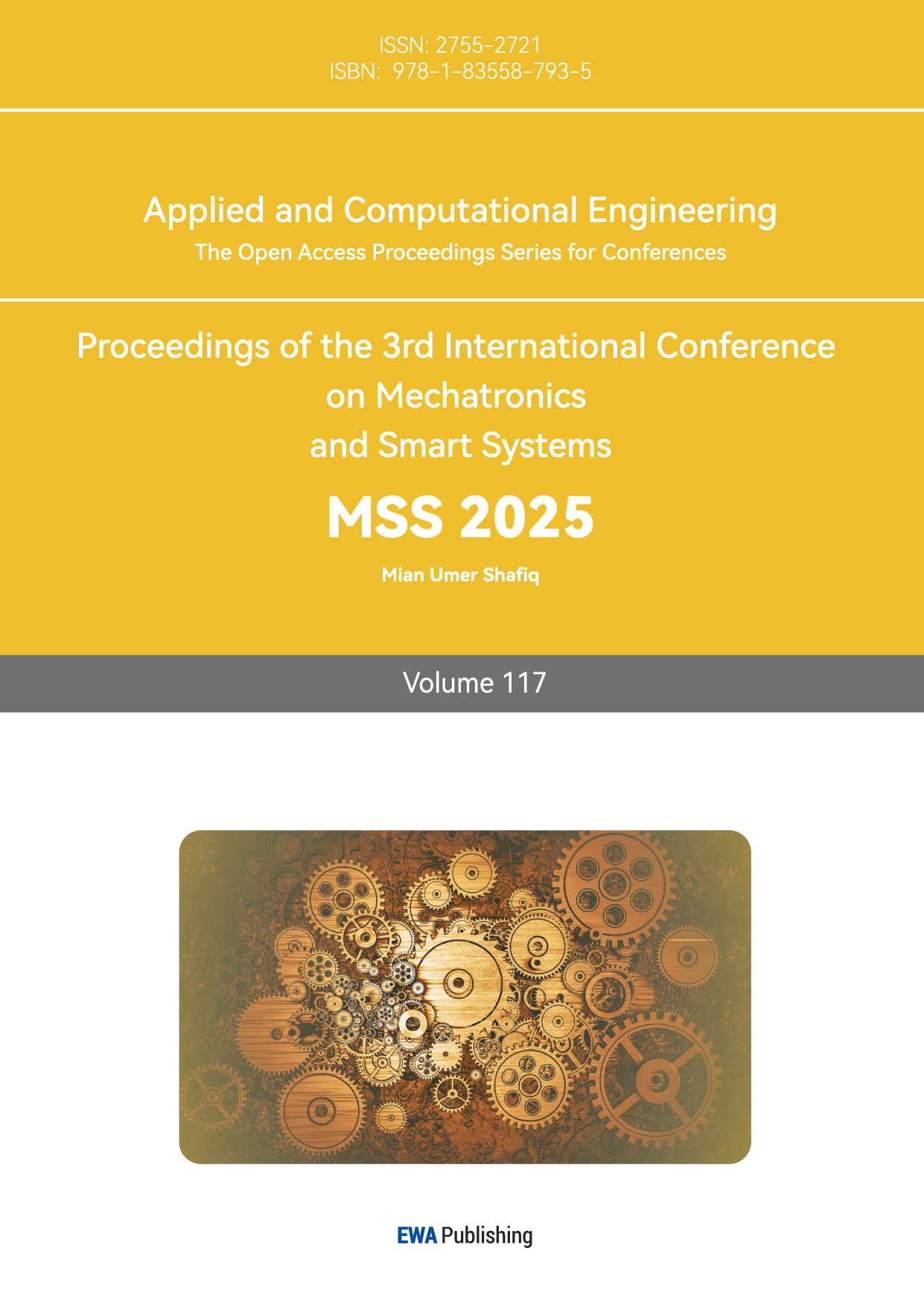1. Introduction
The core working principle of wind energy conversion entails harnessing wind energy via turbines, which transform it into mechanical energy, and subsequently into electrical energy through generators, which is then distributed to the grid. As a prominent form of renewable energy, wind power has become a pivotal focus in China’s energy strategy, driven by national goals of reaching carbon emissions peak by 2030 and carbon neutrality by 2060, alongside the rapid depletion of fossil fuel reserves.
Despite its advantages, wind power generation is subject to significant fluctuations due to various unstable natural factors, such as wind speed, direction, wake effects, air density, humidity, and temperature. These elements introduce randomness and volatility into the power generation process, making precise forecasting essential for maintaining grid stability.
Recent studies in wind power output prediction encompass forecasting models based on machine learning[1], deep learning[2], and hybrid approaches combining the two [3].This paper seeks to systematically review the factors affecting wind power output and classify the existing prediction methodologies. Emphasis is placed on the evolution of traditional forecasting techniques and the integration of artificial intelligence, with a prospective analysis of future trends in wind power prediction.
2. Influencing factors of wind power generation
2.1. Wind turbine power related parameters
The title is set 17 point Times New Roman, bold, flush left, unjustified. The title should be in sentence case. The first letter of the title should be capitalized with the rest in lower case except for proper nouns and abbreviations.
\( P=\frac{1}{2}{C_{p}}Aρ{v^{3}},A=π{R^{2}} \) (2-1)
CP is the turbine power coefficient ;P is the turbine power coefficient; A is the swept area of the wind wheel;ρis Air density; v is wind speed; R is the radius of the wind wheel.
2.1.1. Wind speed and direction
Wind power is the energy harnessed for wind power generation, characterized primarily by wind direction and wind speed. As indicated by the aforementioned formula, the power derived from wind is directly proportional to the cube of the wind speed. Local weather stations are capable of measuring the wind speed and direction at any given moment. It's important to note that for different wind farms, the wind speed and direction can vary significantly at the same point in time. Even within the same wind farm, these conditions can differ from one time to another. Factors such as temperature, monsoon patterns, and ocean currents contribute to seasonal and periodic changes in wind direction and speed. Since wind power is positively correlated with wind speed, an increase in wind speed results in a higher wind power output. Conversely, a decrease in wind speed leads to a reduction in wind power generation.
2.1.2. Air density
Air density calculation formula:
\( ρ=\frac{P}{RT} \) (2-2)
ρ is the density of air, kg/m3; P is the annual mean atmospheric pressure, Pa; T is the annual average international temperature scale air temperature, K
The average annual air density can be calculated by using a 10 min time series. According to the correlation calculation, the standard deviation of air temperature and the annual variation range of air temperature are the main factors affecting air density.
2.1.3. Wake
The wake effect can significantly diminish the output power of wind turbines, with a more pronounced impact on large offshore turbines where power losses can range from 10% to 20%. For onshore wind turbines, these losses can be even more substantial, reaching between 2% to 30%. To address the wake effect, it is essential to first develop an accurate wake model. Currently, several models have been established to simulate wake flow, including the Semi-empirical model, the Jensen model, and the Larsen model, among others. The extent of the wake's influence is primarily determined by factors such as turbine diameter, horizontal wind speed, and the spacing between individual turbines. Optimizing these parameters can help mitigate the negative effects of turbine wakes on overall wind farm efficiency.
3. Forecast classification of wind power generation
3.1. Time scale
Forecasts can be categorized based on their time range into three primary types: ultra-short-term forecasts, short-term forecasts, and medium- to long-term forecasts. Generally, the accuracy of a forecast is inversely proportional to the length of the forecast period. This means that the shorter the forecast period, the less rapid the changes in environmental factors, and consequently, the smaller the forecast error tends to be. This relationship underscores the importance of selecting an appropriate forecast horizon based on the specific requirements and tolerance for error in various applications.
3.1.1. Ultra-short term forecast
Ultra-short-term forecasting, typically defined as predictions made within an hour, plays a pivotal role in the control and management of wind power systems as well as in assessing power quality. The variability of natural elements like wind speed, wind direction, and air density, which exhibit a degree of inertia, tends to amplify as the time scale increases. Consequently, ultra-short-term forecasting models are essential to mitigate the disturbances and variances associated with these natural factors. Commonly employed models for this purpose include Copula quantile regression and the integration of multiple models through Stacking techniques. These sophisticated methods help in enhancing the accuracy and reliability of forecasts, thereby optimizing the operation of wind power systems.
3.1.2. short term forecast
The short-term forecast generally lasts 24 to 72 hours and is mainly used for power system operation, economic dispatch, unit input, etc. The models for short-term prediction usually include auto-regressive models, Markov chain models and Kalman filter models, least square support vector machines, etc. The autoregressive model is to predict the wind speed change in the next few tens of seconds, and then compute the linear regression coefficient through the low-pass filter to complete the processing of the original data and eliminate the noise effect. In the present study, the wind speed is predicted by combining artificial neural network and time series method. First, the wind speed time series is processed by second-order difference transformation. The input variables are selected by the time series model while the rolling weights are adjusted. Finally, according to the distribution characteristics of wind speed, the predicted value of the neural network model is further modified.
3.1.3. Medium and long Term forest
The medium and long term forecast has a time horizon of about one month to one year and focuses on the maintenance and planning of wind power systems. Due to the late start of wind power in China, there are few long-term wind power processing data available, and some forecasting methods requiring large amounts of data, such as neural network, least square support vector machine and machine learning, are not suitable for long-term wind power output forecasting methods. Methods such as gray prediction model [5]and time series can be used for prediction.
3.2. Spatial scale
Due to the comprehensive influence of terrain and other factors, the geographical location of the two related points in instant space is very close, and the wind speed of the two points will not be exactly the same, but their wind speed curves have strong similarities and delay [6]. At the same wind direction, the wind speed at several different locations will also have great differences, even if the geographical location of several related points in space is very close, the wind speed at several locations will also produce large fluctuations. Therefore, it is necessary to predict wind speed and wind power output on a spatial scale. According to the different spatial range, the power of the whole wind farm can be predicted, and the power of a single wind turbine can be predicted.
3.2.1. Wind Farm
Most of the current studies on the spatial correlation of wind farms are long-distance, about 10km apart. The methods used include local recurrent neural network and genetic algorithm learning for prediction. It is used to predict the wind speed of the entire wind farm and the capacity of the entire wind farm.
3.2.2. Single Unit
For a single wind turbine, the existing prediction methods include BP neural network, spatial correlation method, support vector machine and so on. At the same time, ant colony optimization [7] and BP neural network were combined to predict short-term wind speed. The latest research is also based on the hill-climbing search method for maximum wind energy capture simulation, which can also simulate specific types of generators under certain circumstances to obtain the maximum output, which is conducive to the maximum profit of wind power and the dispatch of the grid.
3.3. Forest Objects
It can be divided into direct prediction method and indirect prediction method according to different forecast objects.
3.3.1. Direct prediction method
Direct prediction is to forecast the output power of wind farm. Direct forecasting combines historical power data with historical meteorological data to find and determine similar days. The prediction results are obtained by combining multiple mapping models and power data. Historical meteorological data include wind, wind speed, wake, air density, etc. The quality of input meteorological data, the correlation of input and output, and the generalization ability of the model [8] are the three factors that affect the accuracy of direct prediction.
3.3.2. Indirect prediction method
Indirect prediction first predicts the wind speed, and then realizes the power prediction based on the predicted value of the wind speed. The accuracy of wind speed prediction determines the accuracy of power prediction. The finer the description of the wind speed, the more consistent the power prediction will be and the higher the accuracy of the prediction. There are more indirect prediction methods than direct prediction models, and the process is more complicated but the prediction accuracy is higher.
3.4. Application of artificial intelligence in wind power output prediction
3.4.1. Machine learning
Machine learning is a subfield of artificial intelligence, and machine learning methods are generally used for short - and ultra-short - term power prediction. Some machine learning methods use machine learning to predict after improving the kernel function, and also use machine learning to predict ultra-short-term wind power. The basic process of using machine learning prediction is roughly the correlation analysis of the test data, building the data set, and then using the algorithm to build the model. Where the data build set can be used to test the test model. Finally, the load characteristics of the key position are predicted. Common machine learning algorithms include Gaussian process regression and support vector machine.
3.4.2. Deep Learning
Based on machine learning, deep learning increases the number of layers of the neural network, and relies on a large amount of data to process the data with a deep nonlinear structure to solve nonlinear problems at once. After increasing the number of hidden layers, the fitting can be more accurate, and the data characteristics will be better expressed. At present, the most commonly used deep learning methods are convolutional neural network, recurrent neural network and long short-term memory neural network. Using deep learning to predict wind power generally goes through the following four steps: 1. Data collection 2. Data clarity 3. Data preprocessing 4. Model construction.
In addition to the above several wind power prediction using a single deep learning neural network, It also uses Extreme Learning Machine (ELM), Back Propagation (BP) neural network and Bi-directional Long Short-Term term (BiLSTM) Example of wind power prediction by Memory algorithm model. ELM is a kind of ANN, ANN also includes Single Feedforward Neural Network (SFNN), Radial Basis Function Neyral Network (RBFNN). In addition to using machine learning or deep learning methods alone, there are forms of prediction that combine the two. All these methods have achieved better results in reducing the prediction error and nonlinear fitting.



a. SNLFN [9] b. ELM [10] c. RBFNN [11]
Figure 1: The three ANN model structures
4. Conclusion
This paper delves into the pivotal factors that shape wind power generation, offering a comprehensive overview of key parameters essential for the prediction of wind power output. These parameters include wind speed, wind direction, air density, and the phenomenon of wake effects. The paper proceeds to categorize existing methods of wind power forecasting, providing a detailed examination of the characteristics and application contexts of various models. It organizes these models based on several criteria: time scale, spatial scale, prediction targets, and the use of machine learning and deep learning techniques. A comparative analysis is presented, highlighting the strengths and weaknesses of each approach.
The third section zeroes in on the role of artificial intelligence in wind power prediction. It underscores the importance of selecting the most appropriate model based on the specific input data available. This tailored approach is crucial for minimizing prediction errors and enhancing the accuracy of nonlinear fitting, thereby achieving superior forecasting outcomes. The existing wind power output prediction can meet many conditions, and the next research can shift the focus to wind power prediction under special conditions. For example, offshore wind ultra-short-term wind power forecast, wind power output forecast in extreme weather. At the same time, the model can be improved, for example, Suprisal-Driven Zoneout (SDZ) method can be used to improve the fixed probability used in long and short term neural networks
The lack of rate updating neurons, or the introduction of density peak clustering algorithm to reduce noise points and invalid data in the data set and other methods to better process the data, in order to better nonlinear fitting, improve the prediction accuracy.
References
[1]. Su Zhongde. Research on short-term wind power prediction method based on Machine learning [D]. Anhui engineering university, 2023. DOI: 10.27763 /, dc nki. Gahgc. 2023.000565.
[2]. Yang Xiuyuan, Xiao Yang, Chen Shuyong. Research on Wind Speed and Generation Power Prediction of Wind Farm [J]. Proceedings of the CSEE,2005,(11):1-5.
[3]. Guo Junhong, Wang Xiaoxuan, Wang Yuexin, et al. Application of Copula quantile regression method in ultra-short term output prediction of wind power [J]. Journal of engineering science, 2024 46-48 (10) : 1921-1929. The DOI: 10.13374 / j.i ssn2095-9389.2023.12.15.003.
[4]. ZHENG Yingying, Li Xin, Chen Yanxu, et al. Short-term wind power forecasting method in extreme weather based on Stacking Multi-model fusion [J/OL]. High voltage technology, 1-12 [2024-08-16]. https://doi.org/10.13336/j.1003-6520.hve.20240490.
[5]. Jin Chunxu, Dong Fugui. Comparison of long-term wind power load forecasting methods [J]. Guangdong Electric Power,2018,31(09):70-76.
[6]. BARBOUNIS T G, THEOCHARIS J B, ALEXIADIS M C, et al. Long-term wind speed and power forecasting using local recurrent neural network models[J]. IEEE Trans on Energy Conversion, 2006, 21(1): 273—284.
[7]. Jia Mengmeng. Research on 3D wind field prediction and maximum wind energy capture method for wind power system [D]. Shenyang Polytechnic University,2014.
[8]. Wu Yong, Wang Bing, Chen Yuquan, et al. Application of deep learning model integrating refined meteorological factors and physical constraints in short-term wind power prediction [J]. Power Grid Technology, 2019,48(04):1455-1468. (in Chinese) DOI:10.13335/j.1000-3673.pst.2023.1785.
[9]. BEHERA M K, MAJUMDER I, NAYAK N. Solar photovoltaic power forecasting using optimized modified extreme learning machine technique[J]. Engineering science and technology,an international journal,2018,21(3):428-438.
[10]. HOSSAIN M, MEKHILEF S, DANESH M,et al.Application of extreme learning machine for short term output power forecasting of three grid- connected PV systems[J]. Journal of cleaner production,2017,167:395-405.
[11]. YANG Z L,MOURSHED M,LIU K L,et al. A novel competitive swarm optimized RBF neural network model for short- term solar power generation forecasting[J].Neurocomputing,2020,397:415-421.
Cite this article
Wei,B. (2025). Overview of Wind Power Forecasting Methods. Applied and Computational Engineering,117,114-119.
Data availability
The datasets used and/or analyzed during the current study will be available from the authors upon reasonable request.
Disclaimer/Publisher's Note
The statements, opinions and data contained in all publications are solely those of the individual author(s) and contributor(s) and not of EWA Publishing and/or the editor(s). EWA Publishing and/or the editor(s) disclaim responsibility for any injury to people or property resulting from any ideas, methods, instructions or products referred to in the content.
About volume
Volume title: Proceedings of the 3rd International Conference on Mechatronics and Smart Systems
© 2024 by the author(s). Licensee EWA Publishing, Oxford, UK. This article is an open access article distributed under the terms and
conditions of the Creative Commons Attribution (CC BY) license. Authors who
publish this series agree to the following terms:
1. Authors retain copyright and grant the series right of first publication with the work simultaneously licensed under a Creative Commons
Attribution License that allows others to share the work with an acknowledgment of the work's authorship and initial publication in this
series.
2. Authors are able to enter into separate, additional contractual arrangements for the non-exclusive distribution of the series's published
version of the work (e.g., post it to an institutional repository or publish it in a book), with an acknowledgment of its initial
publication in this series.
3. Authors are permitted and encouraged to post their work online (e.g., in institutional repositories or on their website) prior to and
during the submission process, as it can lead to productive exchanges, as well as earlier and greater citation of published work (See
Open access policy for details).
References
[1]. Su Zhongde. Research on short-term wind power prediction method based on Machine learning [D]. Anhui engineering university, 2023. DOI: 10.27763 /, dc nki. Gahgc. 2023.000565.
[2]. Yang Xiuyuan, Xiao Yang, Chen Shuyong. Research on Wind Speed and Generation Power Prediction of Wind Farm [J]. Proceedings of the CSEE,2005,(11):1-5.
[3]. Guo Junhong, Wang Xiaoxuan, Wang Yuexin, et al. Application of Copula quantile regression method in ultra-short term output prediction of wind power [J]. Journal of engineering science, 2024 46-48 (10) : 1921-1929. The DOI: 10.13374 / j.i ssn2095-9389.2023.12.15.003.
[4]. ZHENG Yingying, Li Xin, Chen Yanxu, et al. Short-term wind power forecasting method in extreme weather based on Stacking Multi-model fusion [J/OL]. High voltage technology, 1-12 [2024-08-16]. https://doi.org/10.13336/j.1003-6520.hve.20240490.
[5]. Jin Chunxu, Dong Fugui. Comparison of long-term wind power load forecasting methods [J]. Guangdong Electric Power,2018,31(09):70-76.
[6]. BARBOUNIS T G, THEOCHARIS J B, ALEXIADIS M C, et al. Long-term wind speed and power forecasting using local recurrent neural network models[J]. IEEE Trans on Energy Conversion, 2006, 21(1): 273—284.
[7]. Jia Mengmeng. Research on 3D wind field prediction and maximum wind energy capture method for wind power system [D]. Shenyang Polytechnic University,2014.
[8]. Wu Yong, Wang Bing, Chen Yuquan, et al. Application of deep learning model integrating refined meteorological factors and physical constraints in short-term wind power prediction [J]. Power Grid Technology, 2019,48(04):1455-1468. (in Chinese) DOI:10.13335/j.1000-3673.pst.2023.1785.
[9]. BEHERA M K, MAJUMDER I, NAYAK N. Solar photovoltaic power forecasting using optimized modified extreme learning machine technique[J]. Engineering science and technology,an international journal,2018,21(3):428-438.
[10]. HOSSAIN M, MEKHILEF S, DANESH M,et al.Application of extreme learning machine for short term output power forecasting of three grid- connected PV systems[J]. Journal of cleaner production,2017,167:395-405.
[11]. YANG Z L,MOURSHED M,LIU K L,et al. A novel competitive swarm optimized RBF neural network model for short- term solar power generation forecasting[J].Neurocomputing,2020,397:415-421.









